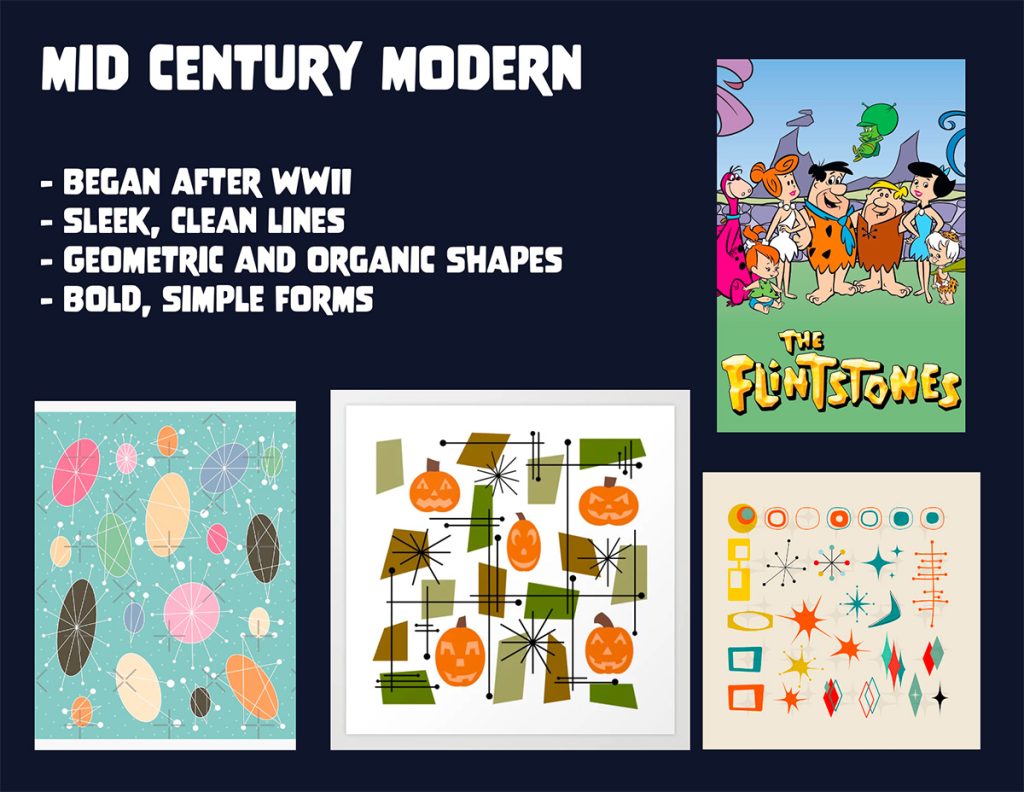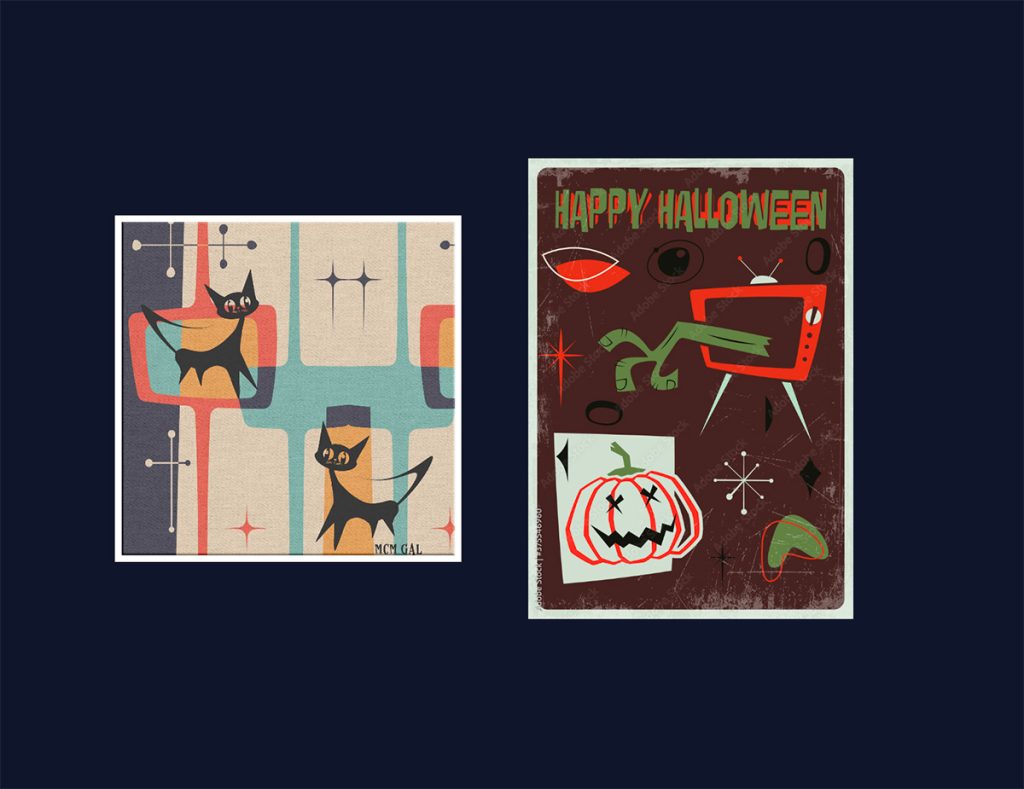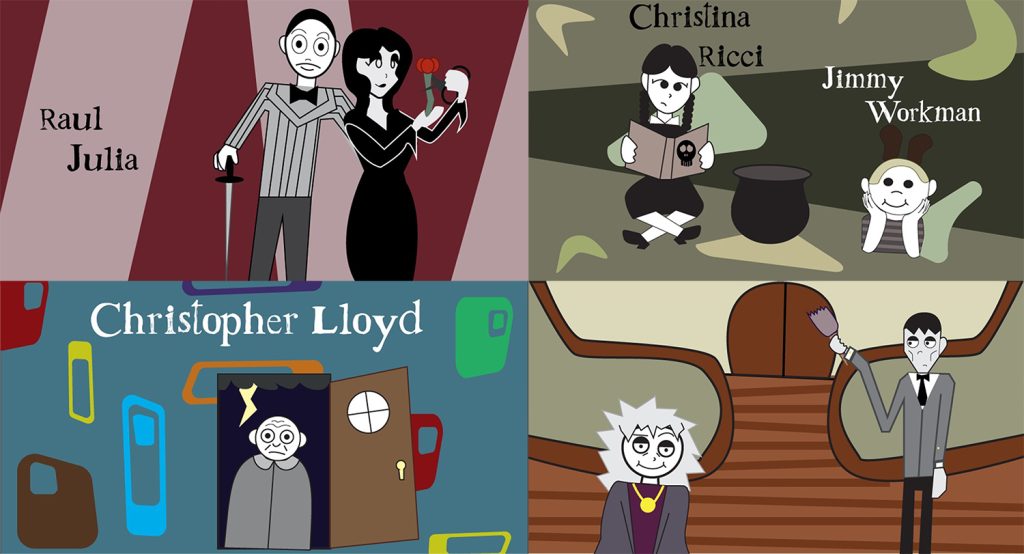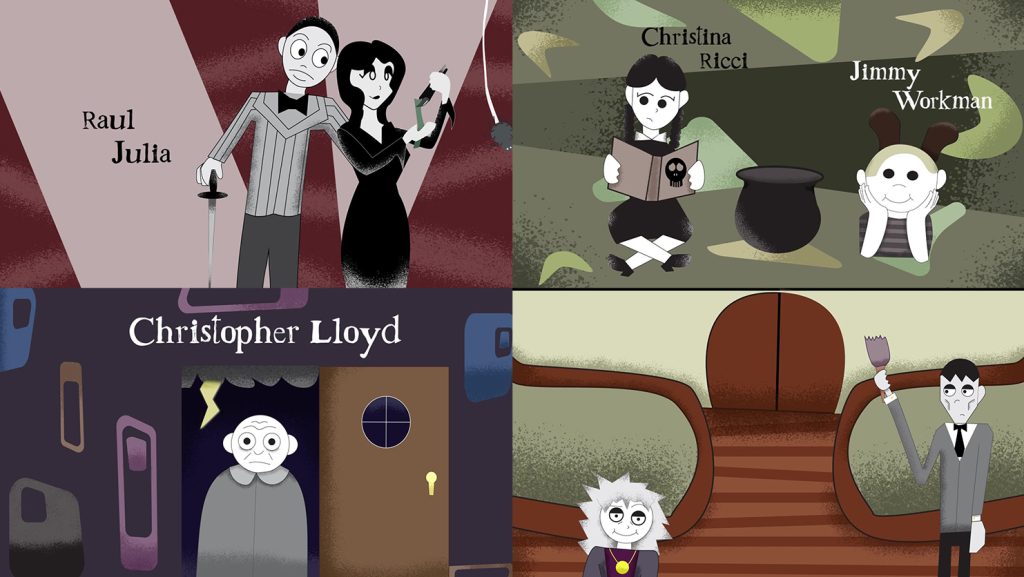Addams Family: A Title Sequence by Miranda Osborne
One of my favorite projects to teach is the art of the film title sequence, which I introduce in my Motion Graphics class. I mentioned in a previous post that for this project, I challenge my students to execute their title sequences in the style of an art movement that was prominent in the 19th or 20th century. This year, Miranda Osborne created a title sequence for the Addams Family after the mid-century modern art movement. The integrity of the art movement shines through in the look and feel of the sequence, and the attention to detail in the animation is impressive. For instance, the characters’ chests are heaving, which is a minor detail that enhances their believability. Plus, she composed the soundtrack using Garage Band!
I reached out to Miranda Osborne to talk about her project. After reviewing her responses, it’s clear that she approached the project with a well-informed understanding of the show, the art movement, and the animation process.
What made you choose the Addams Family for your title sequence?
MO: The Addams Family has always been a favorite film of mine, especially near Halloween time since I was a teenager. The comedy mixed with spooky elements really intrigued me as I watched the film multiple times. Giving depth to characters who originated from single-panel comics made the plot feel that much more real to me as well. Finally, the silly gags based around darker themes always proved to be a good laugh when watching the movie.

What made the Mid-Century Modern Art Movement a good fit for your title sequence?
MO: The elements of comedy mentioned prior reminded me of classic Hanna Barbera cartoons from the 1950s, such as The Jetsons, The Flintstones, and Yogi Bear. These cartoons utilize elements of mid-century modern through their title sequences and art styles. Using these styles for another cast of kooky characters seemed fitting, in my opinion.


Slides from Miranda’s research presentation on Mid-Century Modern
What are some unique characteristics of the art movement that you specifically sought to incorporate in your sequence?
MO: The simple shapes and forms that this art movement brings reminded me of the simpler silhouettes of the Addams Family characters from the late 1930s comics. Utilizing thick and thin abstracted forms to suggest stars or doorways really inspired me to intertwine these elements with the plot of the film.


Could you provide a more detailed explanation of the sub-plot of your title sequence? What specific themes did you want to convey to your audience within the 1-minute duration?
MO: I wanted to use the time available for the title sequence to really inform the audience of the behavior of the characters. As this franchise existed prior to the 1991 film, I aimed to combine the physical and behavioral traits of each character. For example, when Morticia appears on screen, she holds a rose and snips the bud off. This is a reference to a scene in the film in which she does just that, as well as a nod to the 1964 TV series where she commits the same act. In the 1991 film, Gomez is shown multiple times using a sword for various gags and jokes, so having him hold one confidently fits his character well, in my opinion. Wednesday is often shown in the movie trying to come up with ways to harm her brother or others for fun and amusement. Thus, having her read a book with a skull on its cover and pausing to show curiosity suggests she might have found her next plan.
MO: One of the key plot points for the film is the reunion of Uncle Fester and Gomez. When Fester arrives at the manor, the door opens to him standing with eyes wide open during a storm. I wanted to reflect this scene in the title sequence to show the odd nature of Fester and his importance to the plot. Lurch and Grandmama are more secondary characters that appear throughout the manor in the film, so placing them in the main lobby of the manor seemed reasonable to me. Finally, the main antagonist of the film is shown alone between multiple gravestones. Having her appear in lighter clothing and alone helps to suggest how she stands out from the rest of the family. Altogether, I hoped to convey a slight essence of comedy, as well as anticipation for the action in the film through this sequence.
This project has greatly inspired me to see how different art movements and styles can intertwine and mesh together to create an entirely new identity.
How does creating an art-movement-inspired animation impact your artistic process going forward?
MO: This project has greatly inspired me to see how different art movements and styles can intertwine and mesh together to create an entirely new identity. I hope to use this going forward to create pieces more directly inspired by art history and use previous movements to help inspire upcoming ones. Depending on the art style that is used, the emotions of a piece could completely shift, which intrigues me greatly.
Talk about choosing to create an original music composition in GarageBand. What made you go that route?
MO: Ever since middle school, I have been creating original compositions using the GarageBand program, which comes with most iOS devices. Through the years, I have created compositions in many genres, including orchestral, electronic, indie, and even small attempts at rock music! For this project in particular, I felt it would be a great chance to see how my development process has evolved, especially under a time restraint. I tried to envision certain parts of the sequence, such as the beginning and end, as well as transition moments in which music could heighten the experience. Using the iconic Addams Family theme toward the end of the composition was an essential part of the music that I wanted to include. Overall, I am very pleased with how the composition turned out!